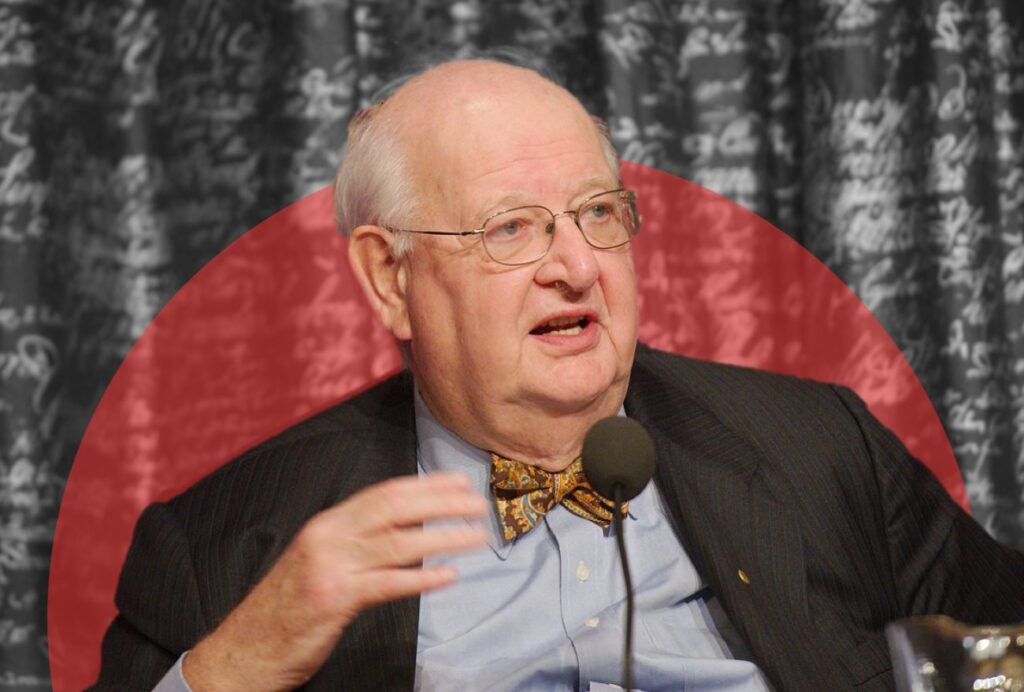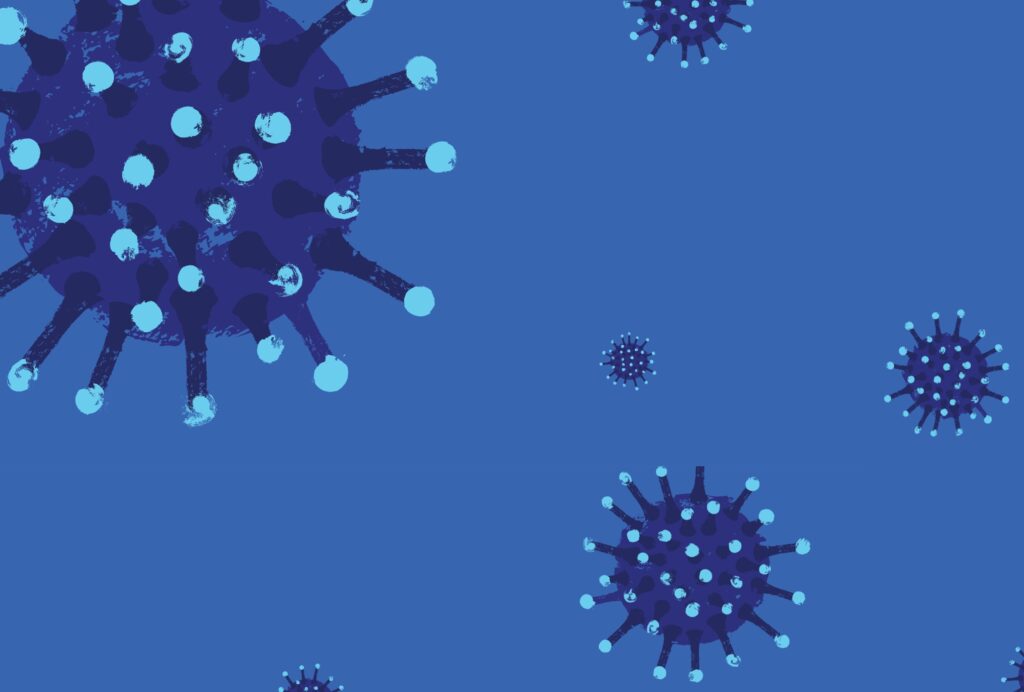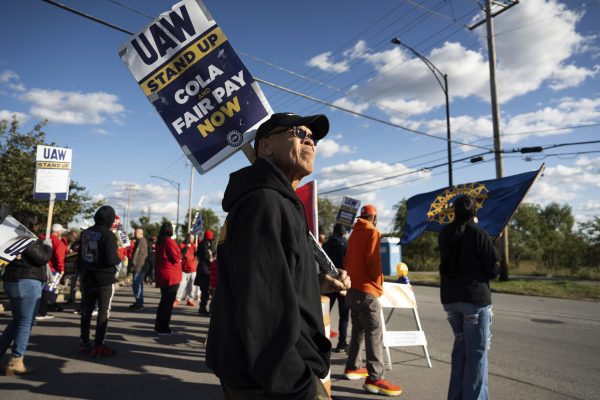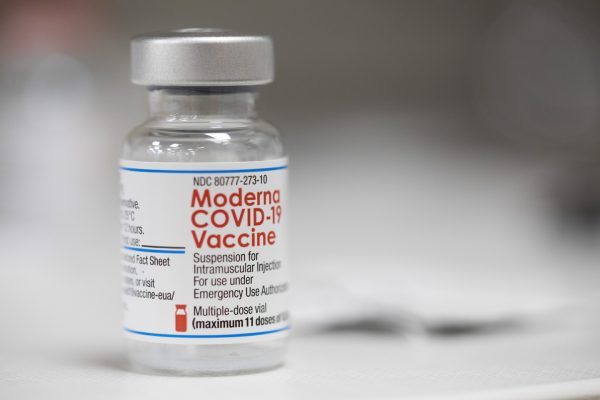Angus Deaton, Dwight D. Eisenhower Professor of Economics and International Affairs Emeritus at Princeton University, has been widely recognized for his work on capitalism and inequality. Awarded the Nobel Prize in 2015 for “his analysis of consumption, poverty, and welfare,” the British American scholar was knighted by Queen Elizabeth II the following year for “for his services to research in economics and international affairs.” In the mid 2010s, he and economist Anne Case turned their attention to what seemed to be a startling trend: the reversal of declines in mortality rates for white working-class Americans in middle age. That research culminated in the March 2020 publication of their book Deaths of Despair and the Future of Capitalism. Last month, Boston Review editor Joshua Cohen spoke with Deaton about this new work—the narrowing economic horizons for the U. S. working class, the relationship between culture, financial hardship, and health, and prospects for change.
• • •
Joshua Cohen: In mid-March you and Anne Case published Deaths of Despair. As the book appeared, much of the country was shutting down because of COVID-19. But the book is about a terrible problem that significantly predates COVID-19, will almost certainly outlive COVID-19, and in all likelihood will be made worse by COVID-19. We’ll come back to the COVID-19 connection at the very end, but I want to focus the conversation on the terrible problem that the book identifies. What were the initial reasons that led you to what you call “deaths of despair”?
‘We were astonished to find that the long-term decline in mortality in the twentieth century for all racial groups had stalled or reversed for white non-Hispanics in midlife.’
Angus Deaton: Like many things that surprise you, you fall over it accidentally. We were working together on suicide, and discovered a remarkable increase in suicides among white non-Hispanics in midlife. We were going to present that at a conference, and it seemed like a good idea to put it in the context of all-cause mortality.
When we pulled that data from the Centers for Disease Control (CDC), we were astonished to find that the long-term decline in mortality in the twentieth century for all racial groups—a trend I’d written about for my previous book, The Great Escape (2013)—had stalled or reversed for white non-Hispanics in midlife. That seemed extraordinary. I should note that African Americans, who have historically had higher all-cause mortality rates, and indeed still do, were making real progress in terms of falling mortality rates.
At the same time, Anne was working on pain—she suffers from very severe lower back pain herself—and she knew there’d been an increase in pain and other morbidity in the same group. And we saw very quickly that this was happening to both men and women, and, most importantly, that this decline was only happening to white people who didn’t have college degrees. Those of us with at least a bachelor’s degree, the educational elite, were somehow exempted from these horrors.
So first we wrote about it in a 2015 paper. When we saw the rise or cessation of fall in all-cause mortality rates, we did what seems like a reasonable thing: we looked at what other things were rising really rapidly and found three that Anne later christened “deaths of despair”: suicide, drug overdose, and alcoholic liver disease. What we got wrong at the time—as Jon Skinner and Ellen Meara picked up very quickly—was that even the rapid rise in these three things could not account for the increase in all-cause mortality. Deaths from heart disease, which had been falling rapidly in the last quarter of the twentieth century, had stopped declining. Lots of people die from heart disease; adding that to the deaths of despair that were going up very fast accounted for the all-cause mortality rates. We had missed that.
‘Our education system, which is geared from kindergarten to send people to college, only graduates a third of its students from college. It is a disgrace.’
We also missed—and the book is clear about this—that these deaths of despair are getting worse not just for white people in middle age (45–55 years old), but for younger people as well. When we wrote in 2015, it was also too early to see the increase in drug overdose among African Americans once fentanyl reached the inner cities after 2013.
JC: In the book you focus on these deaths of despair: 158,000 in 2018, about 100,000 of which are above and beyond what we would normally expect, an excess that is almost entirely among white non-Hispanic men and women without a college degree. The category covers three different causes of death: alcohol, opioids, and suicide. Could you talk about why you group them together?
AD: Initially, “deaths of despair” was a label of convenience. It helped express the sense that these deaths were sort of caused by your own hand—unlike COVID-19, say. We had this sense that you have to look at what’s happening to people in their lives, rather than some fault in the medical systems. Anne thought up that term in an interview, I think. And that led us back to Durkheim, whose thinking about suicide proved very useful and provided some intellectual framework—not something that economists are brought up on.
JC: Yes, it’s not exactly a common American Economic Review reference, but it’s important. To what extent is this fundamentally an opioids issue, rather than an issue of alcohol and suicide as well?
AD: Some have taken the position that what’s really going on here is a drug epidemic, and these things happen from time to time: we’ve had them in this country before. Mind you, these previous drug epidemics—in the United States after the Civil War, or in China when the empire was disintegrating—tended to arise during periods of social disintegration. The simplified story is that some bad Big Pharma manufacturers started pushing opioids on all of us. But in reality, Purdue Pharmaceuticals and other companies went to places where there was already lots of despair. They were looking for despair. They were looking for regions where you could harass doctors into prescribing these drugs.
‘Purdue Pharmaceuticals and other companies went to places where there was already lots of despair. They were looking for despair.’
Our claim in the book is that without this underlying despair—pain, morbidity, people not going to church, people’s lives coming apart—there wouldn’t have been this open field for opioids. On the other hand, if the FDA had not been so much in the hands of the industry, and if we were not operating a rent-seeking, capitalistic health care system, then we wouldn’t have got those efforts to capitalize on the despair. Other countries didn’t get them to anything like the same extent.
JC: You can see that emphasis on drug supply in Beth Macy’s book Dopesick (2018), which is more about planting the poisons rather than the roots of despair in the places where the poisons are planted.
AD: Absolutely.
JC: One of the things that you emphasize is the importance of a bachelor’s degree. That’s different from the story in your 2015 paper. In the book, you focus on whether people have a bachelor’s degree. Not, whether you’ve got an associate’s degree, or a two-year junior college degree, or some form of post-secondary education, but a bachelor’s degree. How did you land on that cut point?
AD: One of the things I learned from Danny Kahneman is to try to make everything into a binary. But a lot of the time we had three categories—“no post-secondary education,” “some college,” “college.”
When we drew these three lines, the line for “some college” was a bit better than the line for people with just a high school degree, but it’s much closer to the high school degree line than the bachelor’s line. Some college helps a little bit. But the extraordinary thing for us was just how much power that bachelor’s cutoff had—in morbidity and mortality, marriage, out of wedlock childbearing, and churchgoing—everything you could think of. We have a real problem in this country. We valorize this bachelor’s degree in a ridiculous way that’s not pinned to anything that people can actually do. It’s this one goal which leaves behind the two thirds of the people in this country who are not going to get it.
JC: One of the issues that you emphasize in the book is the generational aspect of deaths of despair: how it keeps getting worse for younger generations. The idea that this is a process that is worsening over time resonates strongly with Raj Chetty’s account of the fading American dream. I am thinking of the study by Chetty and colleagues about absolute mobility, guided by the question: Are you going to do better than your parents? When I was born in 1951, there was a 90 percent chance of doing better than your parents. If you were born in 1980, chances had fallen to 50 percent.
AD: I grew up in Scotland. My dad started as a coal miner, born in the year of the last pandemic. I don’t know what the mortality rate was in the mining village in England where he was born, but it was pretty high. My kids are in the financial sector, and they make what I earn look completely trivial. There’s a sense of the inevitable, of everything getting better over time.
‘The extraordinary thing for us was just how much power that bachelor’s cutoff had—in morbidity and mortality, marriage, out of wedlock childbearing—everything you could think of.’
So for me, it was a big shock to discover this isn’t happening. Not having a bachelor’s wasn’t such a big disadvantage if you entered the labor market in 1970. You talk to people our age—even people who grew up in working-class areas—and when they went to college, their friends said to them, “Why are you doing that? It’s just a waste of time,” and they were sort of right. But over time that difference has become so much more important. Partly it’s the rate of return, which is roughly 80 percent, compared with 40 percent back then. So you really get hammered materially. But the politics of not having a bachelor’s are really bad too. The Democrats largely decided to abandon the working class and build a coalition of educated elites and minorities (including working-class minorities), and the Republicans basically followed business and religious organizations.
And the health care crises make things worse. Health care costs were 5 percent of GDP back in 1970, and now they’re 18 percent of GDP. Everything is heaping up on these people.
JC: You’re trying to understand this terrible increase in deaths of despair—again, 158,000 in 2018.
AD: Yes, but it is important to say that there are going to be some of these deaths anyway—it’s not like there wouldn’t be any opioid deaths at all in an ideal world. A likely number would be 65,000 in the early 1990s. But we’re talking about another 100,000.
JC: Let’s discuss your explanation. You explore some obvious culprits—wage stagnation, labor market detachment, a ratcheting down of the quality of jobs. But you land on an arresting phrase: “the destruction of a way of life.” Can you say more about what you mean by that?
AD: Raghuram Rajan has a book called The Third Pillar (2019) about what supports a way of life. A lot of it is community. I’m not a regular churchgoer, but many of my friends are, and even in a town like Princeton, the churches are incredibly important social institutions. Unions have mostly gone, along with the social and economic support that they used to give.
The pillars that structured working-class life seem to have gone, or at least been eroded. And we see the fundamental force of that in the labor market. Decent wages and jobs help to bring respectability and meaning into life. We’re not against some of the explanations that focus more on social norms. I think the birth control pill was very important, changing the norms about when and whether you could have children, whether you’d live together without being married. We write about how the pill was very socially divisive. For women who could get educated, it enormously enhanced opportunities to have relationship fulfilment and children as well as really good jobs. But for many working-class women for whom college was not an option, it did the opposite.
But declining wages were an incredibly important part of the loss.
JC: Sometimes the erosion of a way of life—say, the life of serfs—is a good thing. But you connect this idea with Durkheim’s idea of anomie—an experience of normlessness, of lacking a sense of the right way to do things.
‘Churches are incredibly important social institutions. Unions have mostly gone, along with the social and economic support that they used to give.’
AD: I don’t think we particularly valorize that way of life in the book. There were lots of things to disapprove of. The mining village where my dad grew up had very strong social structures. My great-grandparents came as agricultural laborers to find a better life, but the mining village was awful. There was a huge amount of drunkenness, a lot of violence against women.
Nevertheless, you can imagine the destruction of that way of life bringing great distress to the people who lived there. The economist Arthur Pigou said that the motivating force for economic science is the recognition of the “sordidness of mean streets and the joylessness of withered lives.” It’s a great phrase. Amartya Sen said this was the reason why he was interested in economics. But these mean streets still gave structure to people’s lives; there were good things and there were bad things. And the working class is only what, 150 years old anyway?
JC: Other explanations of the phenomena that you write about in the book focus more on culture, and they have a soft version and a hard version. The harder version is Charles Murray; the softer version is J. D. Vance in Hillbilly Elegy (2016), which has a certain resonance with the old Banfield book about what he called “amoral familism.” In the mid-1950s, Banfield was studying southern Italy, and he used the term “amoral familism” to convey the idea that people are concerned about their families, but not about the wider public good, and lack a broader sense of kindness or empathy or generosity. What’s the difference between these cultural theories and yours?
AD: There’s a lot in those books that echoes what we say. But the hard version of that thesis says that there’s somehow been a decline in virtue. That is not a very useful way to describe people killing themselves. Some on the right argue that the working class is not doing so badly—if you fix the consumer price index, or the way we measure benefits and so on, they’re actually doing great. I just don’t think that’s true. When people start killing themselves, you have to think, “Well, wait a minute, wait a minute, wait a minute.” It’s an indication of hardship when they’re doing themselves in. And Murray’s idea that people are dropping out of the labor market because of a decline in industriousness is very hard to reconcile with the fact that labor force participation has been declining at the same time as wages. If people lacked industriousness, wages should be going up as companies try to retain valuable employees.
JC: If increase in the deaths of despair is about the destruction of a way of life, then the next question is, “Well, what’s destroyed the way of life?” Again, we have some standard culprits—automation, globalization/China shock, and immigration, the last of which you are pretty skeptical about. But the key factor for you, the long pole of your analytical tent, is the health care system.
AD: I’m not sure it’s the biggest contributor, but it’s the one we can do something about. It’s a self-inflicted wound, whereas globalization and robots are, in the long run, good things. Maybe globalization’s gone a little too far—we’ve chosen a very high return strategy, but if we back off on risk and move on with a bit lower GDP, we’re not going to be so extended. Immigration is good thing too. Health care’s increase from 5 to 18 percent of GDP means that there’s a trillion dollars a year that’s being wasted, 50 percent more than we spend on the military. The left is concerned with health care coverage, but doesn’t focus nearly enough on the cost of the thing. We’ve got to do something about that.
JC: I would like to try to put together the story about the destruction of a way of life and the focus on health care. Imagine you’ve got Medicare for all, which is supposed to do both the things that you described—universal coverage and bargaining leverage that will enable cost controls. Both very good things. But how does that help to restore a way of life that’s been so eroded?
AD: You might get good jobs coming back, if you can take health care out of the labor market, and there are lots of ways doing that. Victor Fuchs has a voucher scheme, for instance. So does Dana Goldman. But you somehow have to get the state to take over that part of it. In the end you’ve got to have price control somewhere. You can’t let the health care industry and private insurers keep raising prices.
JC: So if there’s health care reform with these two effects—universalizing and also cost controls—that may do something to reverse wage stagnation, which is partly driven by health care costs. And it may do something to reduce labor market fissuring that leads firms to outsource the janitors or the bus drivers. And then you not only end wage stagnation, you get reintegration of workers, and once you get reintegration, you get internal job ladders restored. That’s how I’m trying to link these two ideas—the importance of health care reform and doing something to restore a way of life, whose destruction is the source of the deaths of despair.
‘Health care costs were 5 percent of GDP back in 1970, and now they’re 18 percent of GDP. Everything is heaping up on these people.’
AD: Or if you like, slow down the rate of decline in that way of life. I don’t think we can be too optimistic. Another important part of the health care issue is that states are spending huge sums of money on Medicaid, over which they have no control. One of the ways they find that money is upping state universities’ fees and making them smaller. It’s closing off an important route for ordinary people to move into something better.
But there’s a much more negative scenario, too, which economic historian Robert Allen writes about. In the early nineteenth century in Britain, real wages stagnated for fifty years. Handloom weavers were being replaced by machines in factories in the Industrial Revolution, and wages could only rise when they were all gone, and the way of life and around handloom weaving had been destroyed. It would be extreme to say now that wages will only start rising when everyone has a bachelor’s and has joined the educated elite, though it wouldn’t be an elite anymore. More optimistically, we have to change our educational system so that there are wider routes to success and to a meaningful life than going to college, which only a third of people do.
JC: You made some skeptical remarks earlier about the importance of a college education. Rick Santorum, socially conservative former senator from Pennsylvania, made a statement—in the 2012 campaign—about how misguided it was to think that everybody needed a college degree. I don’t like Rick Santorum very much, but I couldn’t quite get why people thought this was such a horrible thing to say. You might think that if things are way better for people with college degrees, then the thing to do is to make sure that everybody gets a college degree. The alternative is to make sure things aren’t horrible for people who don’t have college degrees.
AD: I do think it would be better if everybody who’s capable of and wants to get a college degree could get a college degree, and the high cost of state universities is working against that. I remember reading Elizabeth Warren’s book—how she started as a waitress she took night school classes. Nothing I want to say would want to detract from that, but our education system, which is geared from kindergarten to send people to college, only graduates a third of its students from college. It is a disgrace, because the other two thirds are in this vulnerable group. So I didn’t know about Santorum, but I can imagine why people get very angry, but I think we’ve got to change our educational system so that it offers multiple things. You’ve got to find other things for people to do, and a much greater multiplicity of valorization of occupations. And people say Germany is like that, but I don’t really know.
JC: You mention Germany, which reminds me that we have not talked much about how your book really is about the United States. Lots of countries face a common set of pressures—automation, globalization, and, some would add, immigration—but you’re not seeing an explosion in deaths of despair in other places, nor, as you also observe, the same kind of post-tax transfer, extreme growth in inequalities in the distribution of income.
AD: Except in Scotland, which is where I come from. Lots of deaths of despair in Scotland.
‘There has been a 300 percent increase in recent online reports of overdoses. It’s social isolation in the most material sense. It’s not loneliness, but that the ability to connect with providers of alternatives to opioid poisons has been cut off.’
JC: At pretty good first approximation, though, whether the roots of the troubles lie in U.S. “meritocracy” or the pathologies of the U.S. health care system, or some toxic blend of those two, your book describes a fundamentally American story.
One final thing: I was reading this morning about reports of large increases in deaths due to drug overdoses since COVID-19 hit. There’s a group called NEXT Harm Reduction, which provides Naloxone to people. They said they’ve seen a 300 percent increase in recent online reports of overdoses.
AD: I didn’t know, and I’ve speculated about that, because the supply line’s going to be harder.
JC: That’s right. The story, at least as I have read it, is that it’s social isolation in the most material sense. It’s not loneliness, but that the ability to connect with providers of alternatives to opioid poisons has been cut off.
AD: We have been speculating, Anne and I, about the treatment—that a lot of the treatment’s not available anymore. It’s also true that for AA and Al-Anon, meetings have moved online. But for people who are in recovery for drug addiction or alcohol addiction, isolation is an incredibly dangerous thing. So that could be part of it, too.
JC: Yes, this does point to the issue that came up at the top of our discussion: that the terrible problems that you have written about in the book not only existed before COVID-19, and will outlive COVID-19, but potentially could be worsened by COVID-19.
‘A lot of evidence suggests that in recessions, mortality rates typically go down. The Great Depression was a very good time for life expectancy. But suicides do go up. It’s not a simple story.’
AD: Right. Well, Trump’s been implying that people will die in droves if we don’t reopen the economy, and we’ve been pushing back on that because the problem of deaths of despair is a fifty-year process, not something that happens in fifty days. A lot of evidence suggests that in recessions, mortality rates typically go down. The Great Depression was a very good time for life expectancy. But suicides do go up. It’s not a simple story. They say in New York that what would normally be filling hospital beds would normally be filling with traffic and construction accidents, and there aren’t any.
JC: We recently published an article about the typical effects of recessions, in which Sarah Burgard and Lucie Kalousova note that recessions often improve population health, but speculate that this particular one will be different and worse. It’s not obvious that you can extrapolate from previous experience.
Well, on these relentlessly grim notes, we should probably wrap it up. I really appreciate your taking the time, Angus.










